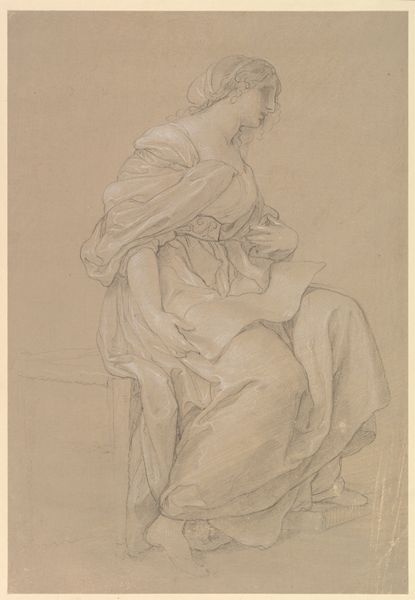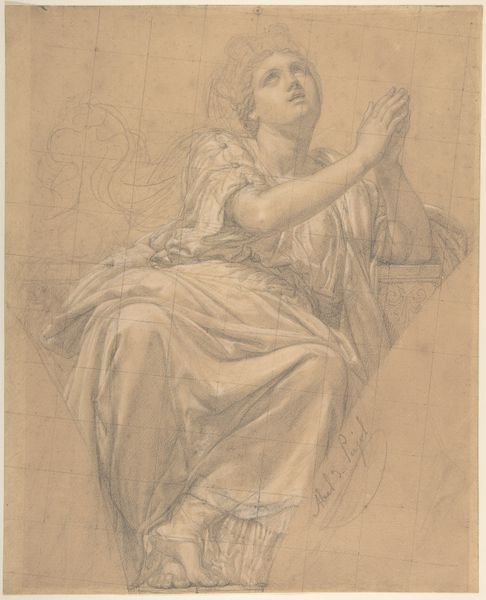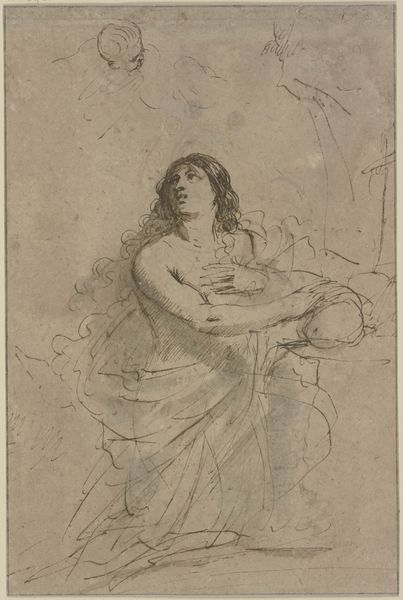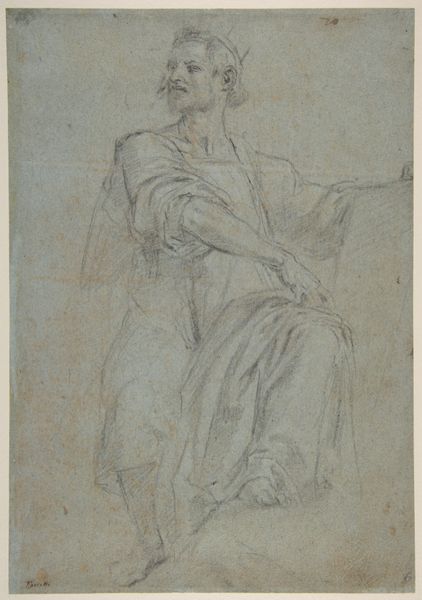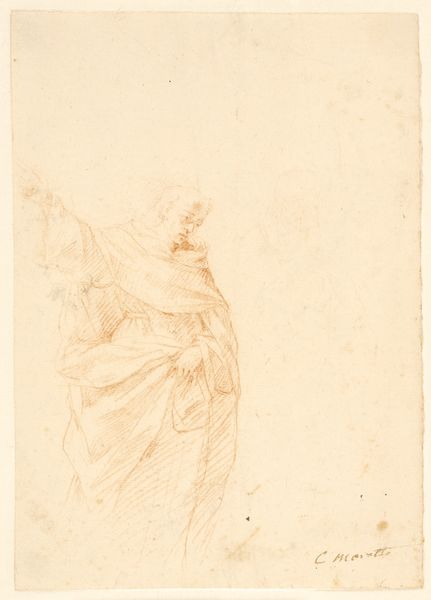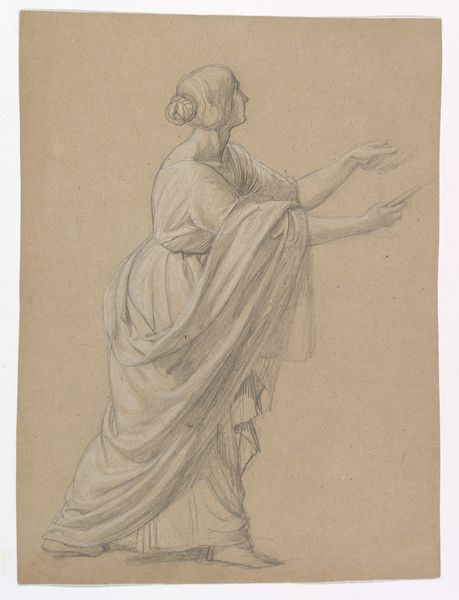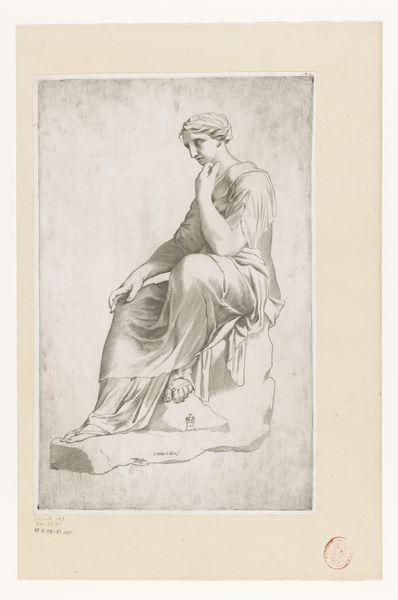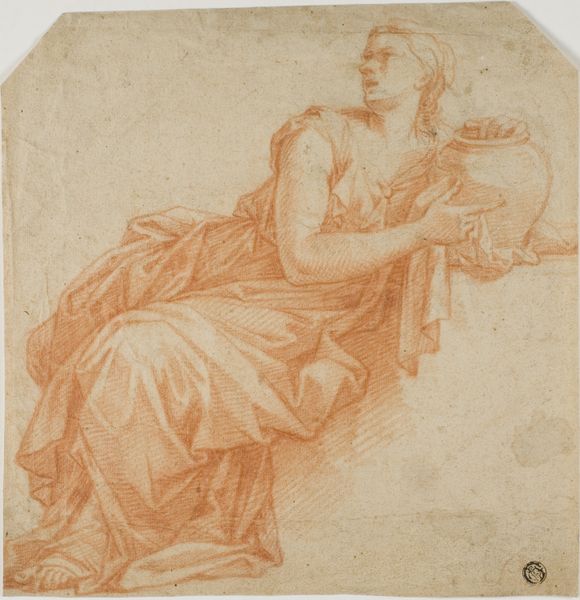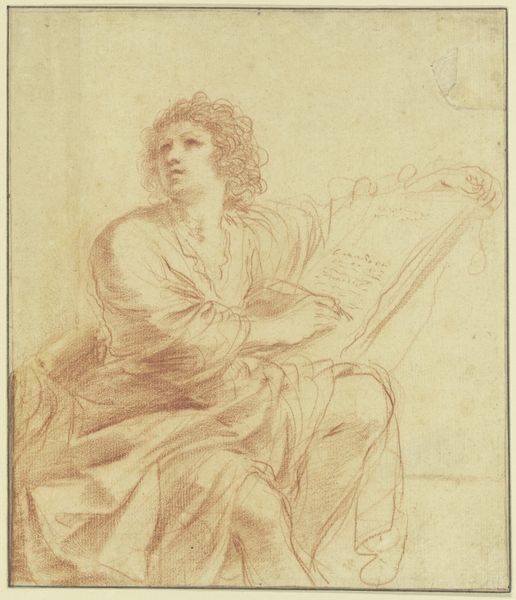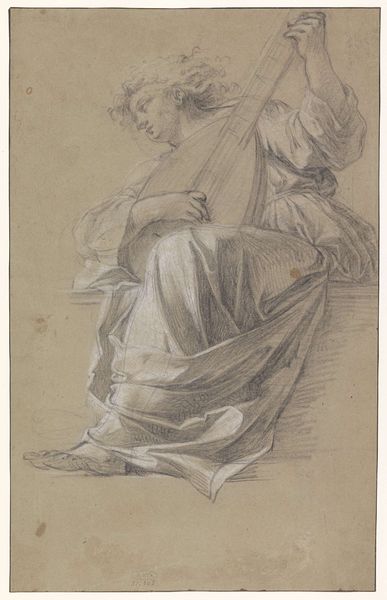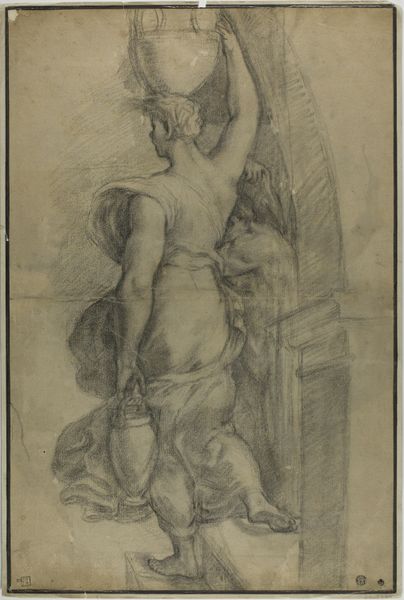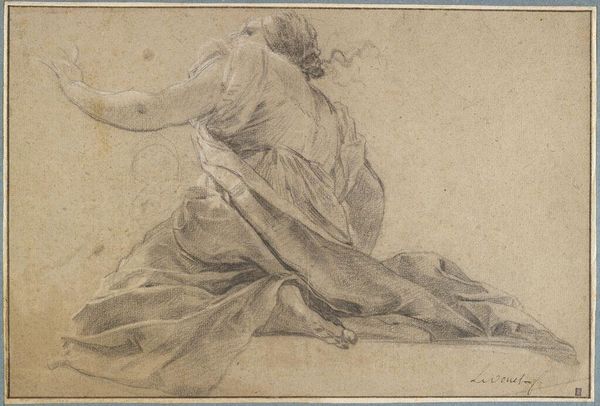
Kvinde med murkrone, siddende i en vogn(?), ved hendes side et overflødighedshorn. Allegori på en by. 1807
0:00
0:00
drawing, pencil
#
portrait
#
drawing
#
neoclacissism
#
allegory
#
charcoal drawing
#
pencil drawing
#
pencil
#
portrait drawing
#
academic-art
Dimensions: 416 mm (height) x 368 mm (width) (bladmaal)
Editor: This is Andrea Appiani's "Kvinde med murkrone, siddende i en vogn(?), ved hendes side et overflødighedshorn. Allegori på en by," a pencil and charcoal drawing from 1807. It strikes me as a very formal, almost stoic portrayal, with its neoclassical lines and somber tone. What visual elements stand out to you in this drawing? Curator: Formally, the drawing is quite intriguing. The artist employs a rigorous grid structure beneath the visible sketch, implying a dedication to order and proportion – a clear hallmark of Neoclassical ideals. Consider the interplay between the strong, decisive lines defining the figure and the softer, more diffuse shading that creates volume and depth. Do you notice how the draping of the clothing, rendered with such precise detail, both reveals and conceals the figure's form? Editor: I do, it almost feels sculptural, the way the fabric folds are depicted. And the grid feels very present; it doesn't quite disappear. Curator: Precisely! That tension between the underlying structure and the emerging form creates a dynamic visual experience. Appiani's handling of light and shadow, particularly around the face and the cornucopia, suggests a conscious effort to imbue the allegorical figure with both gravitas and abundance. What impact does that directional light have? Editor: I think it gives her a sense of authority and elevates the cornucopia, emphasizing prosperity. Curator: Exactly! Ultimately, Appiani demonstrates mastery over both line and tone to evoke complex ideas related to civic identity and prosperity in a clear visual style, representative of Neoclassical art principles. Editor: This breakdown really helps to see how the artist uses form to build meaning in the image. Thanks! Curator: My pleasure.
Comments
No comments
Be the first to comment and join the conversation on the ultimate creative platform.
